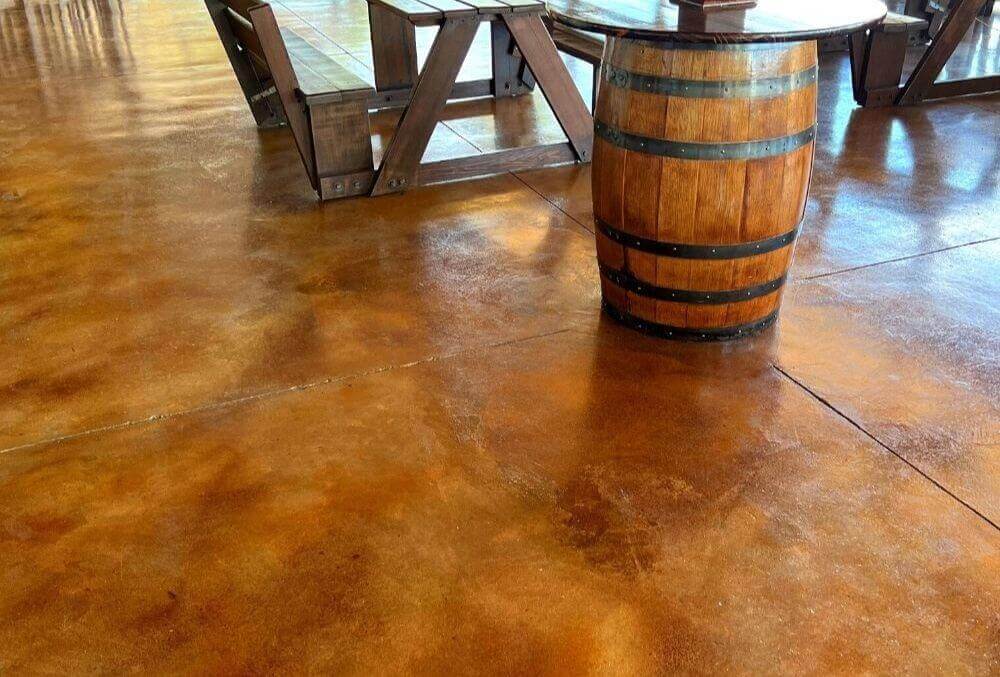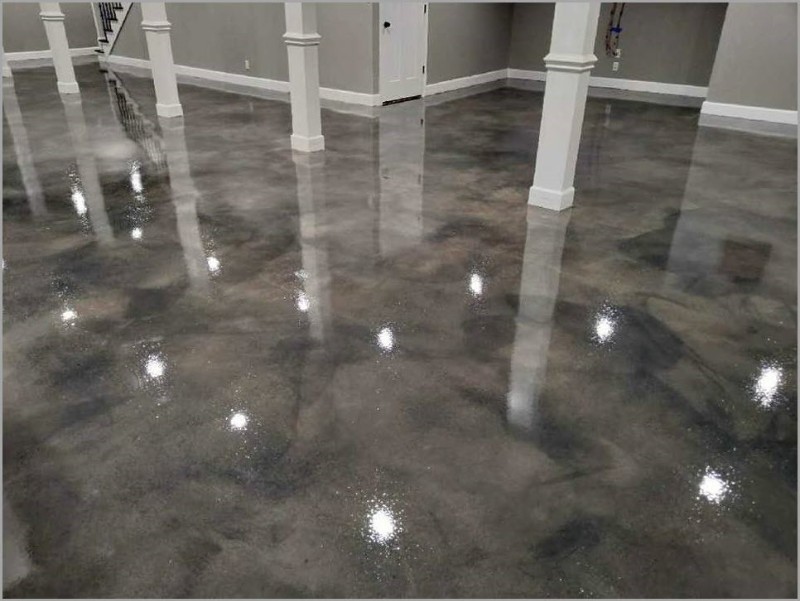How Stained Concrete Adds Character and Durability to Your Space
How Stained Concrete Adds Character and Durability to Your Space
Blog Article
Why Local Discolored Flooring Is the Perfect Choice for Sustainable Home Enhancement
In the realm of sustainable home enhancement, local tarnished floor covering has actually emerged as a prominent selection amongst eco conscious homeowners. As an economical investment with lowered maintenance needs, it elevates a thought-provoking concern: could this be the suitable remedy for lasting real estate?
Recognizing the Concept of Local Discolored Flooring
While the notion might seem novel to some, neighborhood tarnished flooring is an ingenious approach to home enhancement that combines visual appeals, durability, and sustainability. The term describes using in your area sourced wood that is tarnished to achieve a distinctive visual appeal. The discoloration process not only boosts the all-natural appeal of the timber grain but likewise includes a layer of defense, enhancing the long life of the floor covering. This technique is thought about sustainable as it decreases the demand for transport of raw products from distant areas, thus minimizing carbon footprints. Making use of local wood varieties often sustains local economies and advertises liable forest management techniques. This idea, therefore, provides property owners an ecologically liable option without compromising visual allure or durability.
The Aesthetics of Local Tarnished Floor Covering
Why is local stained floor covering obtaining popularity for its visual appeals? Local stained floor covering offers a varied range of patterns and shades, reflecting the natural appeal and variations of the regional timber varieties utilized. Inevitably, the attraction of neighborhood stained flooring lies in its capability to change homes right into unique, visually appealing rooms while advertising sustainability.
Ecological Effects of Regional Tarnished Floor Covering
The ecological implications of neighborhood discolored floor covering include two significant variables: reducing carbon impact and waste reduction benefits. Utilizing locally sourced materials for discoloring not just reduces transportation discharges, yet also advertises lasting forestry techniques. The waste reduction element comes into play as these flooring types typically have a longer lifespan, lowering the frequent requirement for replacements and the waste linked with it.
Lowering Carbon Footprint
As property owners turn to even more sustainable alternatives, regional tarnished flooring arises as a feasible service to lower carbon footprint. This sort of flooring mostly utilizes locally sourced materials, which considerably decreases the requirement for transportation. This minimizes exhausts linked with products transportation, adding to reduced degrees of greenhouse gases in the atmosphere. The process of tarnishing the floor covering, rather than using synthetic layers, entails less chemicals and less energy-intensive procedures. This results in a reduction in carbon discharges throughout the production process. Deciding for neighborhood tarnished floor covering shows an efficient procedure in advertising environmental sustainability, highlighting a tangible means house owners can contribute to combating climate modification from the convenience of their very own homes.
Waste Reduction Benefits
Although frequently neglected, waste minimization is another significant advantage of local stained flooring. Furthermore, the discoloration process makes use of fewer sources and creates much less waste compared to making new flooring materials. The selection of local discolored floor covering not only beautifies homes but likewise underpins a dedication click to lasting living and waste reduction.
The Toughness and Upkeep of Regional Tainted Flooring

The Cost-Effectiveness of Local Tainted Flooring
While local tarnished flooring could at first seem more costly than other options such as carpeting or laminate, its long life and longevity promptly turn it into a cost-effective selection. The in advance price is typically offset by the reduction in upkeep expenditures with time. Unlike carpets that require routine deep cleansing or laminate that may need replacement after a couple of years, tarnished floorings are developed to last, decreasing the demand for costly fixings or replacement. Moreover, neighborhood sourcing of materials minimizes transport expenses, adding to both financial savings and a lower carbon footprint. For homeowners looking for a sustainable, cost-effective remedy for their flooring requires, local stained floor covering arises as an exceptional, long-term investment that pays Residential Stained Concrete Floors off gradually.

The Real World Instances of Sustainable Residences With Neighborhood Discolored Flooring
In the world of sustainable home renovation, neighborhood tarnished flooring has actually become a prominent alternative. To better show its benefits, a number of reality examples of eco-friendly homes that have actually successfully integrated this floor covering method will certainly be highlighted. These situation studies give substantial evidence of the benefits and influence of using neighborhood stained flooring in sustainable homes.

Showcase: Eco-Friendly Floor Covering Houses
Scanning the world, one can locate countless homes that personify the sites idea of green living with the use of local tarnished floor covering. Throughout oceans in copyright, a modern-day house showcases its abundant, maple-stained flooring, a testament to the abundant regional wood supply (Residential Stained Concrete Floors). These homes not just display the visual versatility of regional stained flooring yet additionally its payment to a much more lasting lifestyle.
Neighborhood Tarnished Flooring Benefits
The undeniable appeal of neighborhood tarnished floor covering expands beyond its visual charm, as it likewise uses significant advantages to both home owners and the setting. Another example is a green-certified home in Austin, Texas, where in your area sourced walnut was discolored and utilized for flooring, adding to the home's LEED qualification.
Verdict
In verdict, regional discolored flooring is a lasting and practical alternative for home enhancement. This selection supports neighborhood economic climates, reduces environmental influence, and improves home aesthetics. Its resilience ensures durability, lowering maintenance prices in the lengthy run. With its special mix of ecological, economical and aesthetic advantages, neighborhood stained flooring is a clear option for house owners looking for a lasting, aesthetically enticing and affordable home renovation option.
In the realm of sustainable home renovation, regional discolored flooring has actually emerged as a preferred selection amongst environmentally conscious home owners. Regional discolored flooring uses a varied array of patterns and shades, showing the all-natural beauty and variations of the regional timber species utilized. The selection of neighborhood stained floor covering not only beautifies homes however additionally underpins a dedication to lasting living and waste reduction.
For property owners looking for a lasting, affordable solution for their floor covering requires, neighborhood stained floor covering arises as a superior, long-term investment that pays off over time. Residential Stained Concrete Floors.
With its one-of-a-kind mix of ecological, economical and aesthetic advantages, neighborhood discolored flooring is a clear choice for house owners looking for a sustainable, visually enticing and cost-efficient home renovation solution.
Report this page